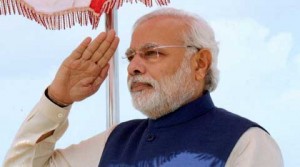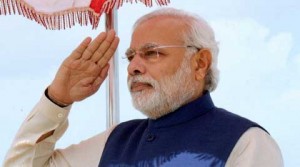Arab News
RAJEEV SHARMA
Two months hence the Bharatiya Janata Party (BJP) government, led by Prime Minister Narendra Modi would be completing two years in office. In the Indian political setup a ruling party is usually in its most vulnerable phase mid-term and the opposition is on the ascendancy. But the prevailing political scenario in India defies the usual mid-term trends.
The BJP is down with two major electoral reverses in assembly polls in Delhi and Bihar last year but is definitely not out. The BJP still remains a potent political force pan India. The popularity of Modi may have taken a hit but he still continues to be the most popular leader across the country.
The Congress story remains more or less the same. One would have expected the grand old party to gain both politically and electorally, largely at the expense of the BJP. But it has not happened. The Congress drew a blank in the 70-member Delhi in the February 2015 assembly elections but made impressive gains in the Bihar assembly polls last November.
However, the Congress gains in Bihar can’t be attributed to the 130-year-old party. It was a mere bit player and it made electoral gains simply because it rode piggyback on the Grand Alliance powered mainly by regional satraps Lalu Prasad Yadav’s Rashtriya Janata Dal (RJD) and Chief Minister Nitish Kumar’s Janata Dal (United).
Though the charisma of Modi and his BJP is decidedly on the wane, the Congress party has failed to recover either politically or electorally. This is a confounding trend. Far from being on a recovery mode, the Congress is shrinking if one takes into account the number of states it is in power. When the Modi tsunami swept India in April-May 2014 general elections, the Congress was in power in eight states out of a total of 29. Today the Congress is in power in seven states and is in imminent danger of losing two more. Last month, the northeastern state of Arunachal Pradesh, which borders China saw the toppling of Congress Chief Minister Nabam Tuki and the swearing in of dissident Congress leader Kalkho Pul with outside support of the BJP.
Interestingly, the dissident Congress legislators teamed up with the BJP legislators, held the session of the assembly in a community hall, impeached the Speaker Nabam Rebia, passed a no-confidence motion against Chief Minister Tuki and elected Pul as their leader. Pul was sworn in as the state’s eighth chief minister soon thereafter.
Now the Congress party is facing a grave risk of losing power in two more border states of Manipur and Uttarakhand. The same Arunachal Pradesh-type drama is being played out in these two states.
It speaks volumes of the Congress party’s completely inept leadership both at the state level and the central level. The Congress leadership has miserably failed to keep its flock intact in all these states. Incidentally, both Manipur and Uttarakhand are poll-bound and are due to have fresh assembly elections in less than a year.
The case of Uttarakhand is even queerer as the rebellion against Chief Minister Harish Rawat has been led by none other than prominent Congress leader Vijay Bahuguna — a former chief minister. The state governor has fixed March 28 for test of strength on the floor of the assembly. Chief Minister Rawat should be thankful to the governor, an appointee of the BJP government, for giving him 10 days time to prove his strength in the house.
Congress Vice President Rahul Gandhi accused the BJP of destabilizing the Rawat government and remarked thus: “Toppling elected governments by indulging in horse trading and blatant misuse of money and muscle, seems to be BJP’s new model, after failure in Bihar.”
However, Rahul Gandhi will do well to do some introspection and be in command of his flock at the central and states level instead of being a crybaby.
The Congress party has a litmus test fast approaching. Of the five assembly polls due from next month, the Congress is a major contender in only states — Assam and Kerala. Congress is ruling both the states currently but in both these states it is facing a stiff challenge from the BJP. One would know when results of elections in Assam, Kerala, West Bengal, Tamil Nadu and Puducherry would be out on May 19.
Electoral loss in any of the two states will not be good for the grand old party. As things stand now, the political scenario in India can be described in one line thus: Modi’s BJP may be on a downhill course but the Congress, the main opposition party, continues to be in doldrums.




